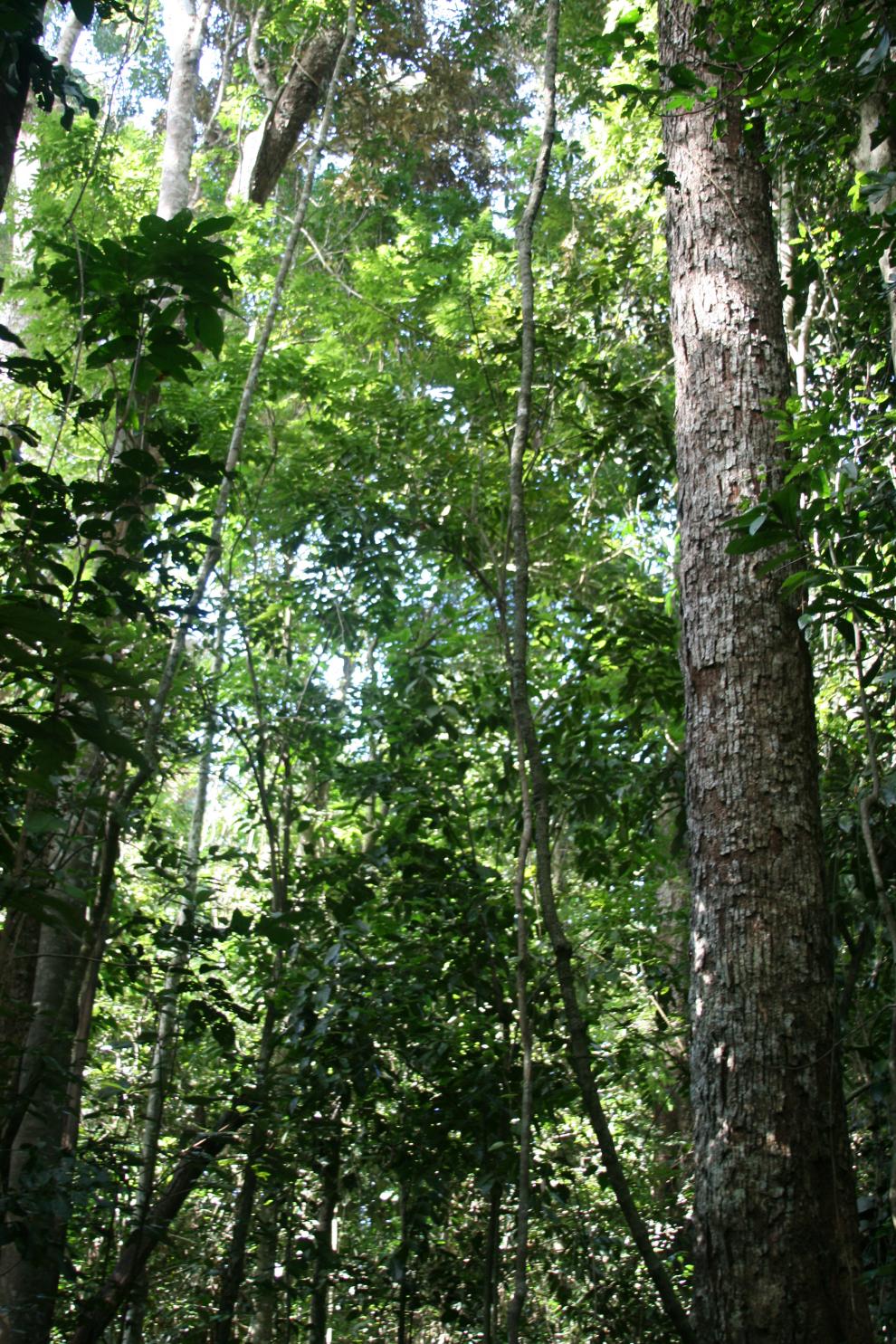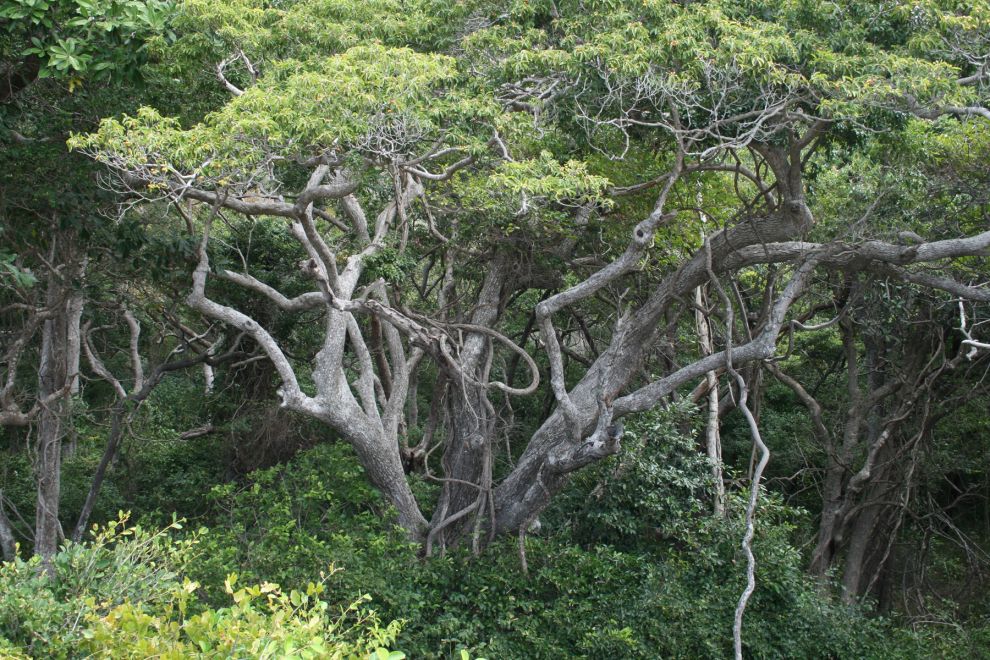
- Wet Tropics Management
- Legislative framework
- Management partnerships
- Sustainable Tourism Plan
- Threats to the Area
- Research and a Learning Landscape
- How can I help?
A research team headed by Dr Dan Metcalfe from the CSIRO has been studying the role of fire in three different plant communities in the Wet Tropics as part of a National Environmental Research Program funded project. The research looked at the impacts of fire on littoral rainforest, Mabi forest and mahogany glider habitat, all listed as Matters of National Environmental Significance under the Commonwealth Government’s environmental legislation, the Environmental Protection and Biodiversity Act 1999.
Initial results outline the benefits of using different fire regimes in management of different vegetation communities. The information produced from this study can be used to better understand the use of fire as a tool to maintain overall ecosystem health in the Wet Tropics. It highlights the need for empirical data to underpin fire management and policy decisions.

Fire has been used in the Wet Tropics by Indigenous Traditional Owners for many thousands of years. It is a vital part of the landscape yet the role of fire in rainforest management is oft a point of heated debate amongst researchers and land managers. With the frequency and intensity of fires predicted to rise under climate change, increasing our knowledge about the role that fire plays is becoming increasingly important.
Mahogany gliders (Petaurus gracilis) are listed as Endangered under both Commonwealth and State legislation. They are endemic to the southern Wet Tropics region with suitable habitat restricted to a small, fragmented strip of sclerophyll forest along the coastal lowlands. Approximately half of this habitat has been cleared with the gliders naturally occupying only some of what remains. Additionally, one third of the remaining mahogany glider habitat is expected to be lost due to impending vegetation thickening (see footnote 1). Rainforest thickening occurs in the absence of fire in the landscape and is a major threat to the mahogany glider.

Dr Metcalfe’s research has confirmed that incursions of rainforest species into the mahogany glider’s sclerophyll habitat that are less than 5 years old can be slowed using relatively low intensity fires. However, thickening that is greater than 10 years old requires very high intensity burns which can negatively impact on other important habitat features.
The mahogany glider recovery plan, which is currently being updated, aims to improve the conservation status of the species through, in part, protecting its remaining habitat. Dr Metcalfe’s results suggest that there needs to be major changes made to the way that fire is used to manage mahogany glider habitat.

Mabi forest is a type of rainforest that is restricted to a few small remnant patches on the Atherton Tablelands, between the towns of Atherton, Kairi, Yungaburra and Malanda. There is also a small patch located at Shiptons Flat, south of Cooktown. Mabi forest is listed as a Critically Endangered Threatened Ecological Community under Commonwealth legislation. It is also listed as an Endangered regional ecosystem (RE 7.8.3 and RE 7.3.37) under Queensland’s Vegetation Management Act 1999. Thirteen plant and 12 animal species that occur in Mabi Forest are listed as threatened nationally or in Queensland. Around 80% of Mabi forest has been cleared and what remains is highly fragmented, both internally, from roads and clearings, and externally.
Mabi forest only occurs on fertile, young stony basalt located at the lower rainfall limit of rainforest distribution in the region. It is typified by a high proportion of deciduous and semi-deciduous canopy trees (which exhibit heavy leaf fall in times of moisture stress), along with a dense, well-developed understorey shrub layer.
Dr Metcalfe’s experimental research involved burning leaf litter from Mabi forest in a controlled laboratory environment to see if the seasonally dry rainforest may support fires in exceptionally dry years. The researchers tested the leaf litter using different moisture levels and found that it did burn under certain conditions. More research would be required to determine if leaf litter fires in Mabi forest are an important management tool for controlling weeds and promoting tree recruitment.
 Littoral rainforest - a case study
Littoral rainforest - a case studyLittoral rainforest is found along the eastern coast of Australia from Cape York Peninsula to Victoria as well as on offshore islands. It occurs on a range of landforms which have been influenced by coastal processes including sand dunes and headlands. The defining feature of littoral rainforest is the influence of salt on the forest, which is delivered via the air, groundwater or occasional inundation.
Like Mabi forest, littoral rainforest is listed as a Critically Endangered Threatened Ecological Community under Commonwealth legislation. Many remnant areas are fragmented and what remains is threatened by a range of factors including weed invasion, clearing and fire. Following the destruction to the Wet Tropics caused by Cyclone Yasi in 2011, Dr Metcalfe’s research in this area has focused on mapping the extent of littoral rainforest in the region. The study has also assessed the condition of the littoral rainforest and threats. This work has been undertaken collaboratively with Terrain Natural Resource Management, government agencies, community groups and Traditional Owner organisations including Girringun Aboriginal Corporation.
1 Jackson, Stephen M., Morgan, Gethin, Kemp, Jeanette E., Maughan, Mirjam, and Stafford, Cherie M. (2011). An accurate assessment of habitat loss and current threats to the mahogany glider (Petaurus gracilis). Australian Mammalogy 33, 82–92.